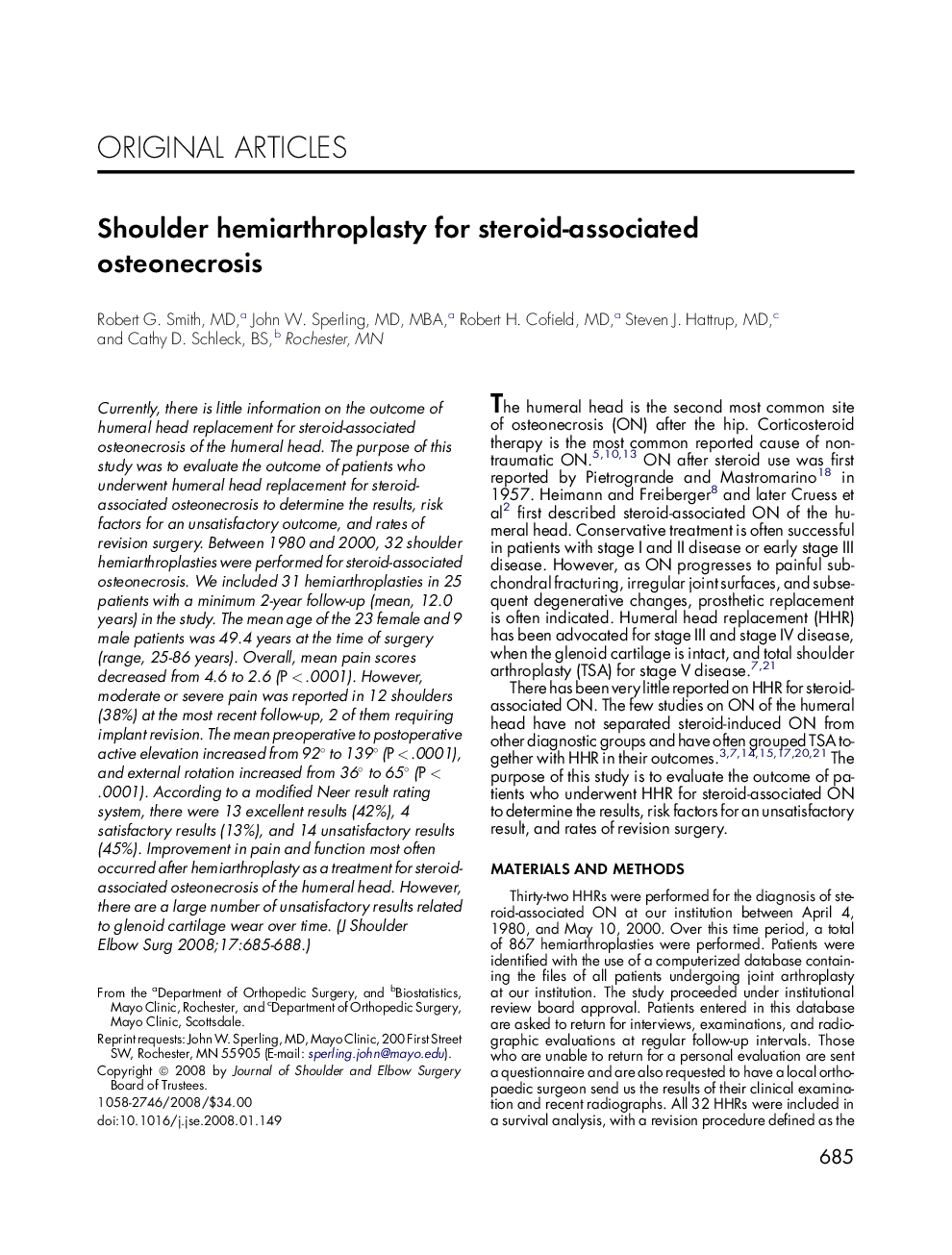| Article ID | Journal | Published Year | Pages | File Type |
|---|---|---|---|---|
| 4075699 | Journal of Shoulder and Elbow Surgery | 2008 | 4 Pages |
Currently, there is little information on the outcome of humeral head replacement for steroid-associated osteonecrosis of the humeral head. The purpose of this study was to evaluate the outcome of patients who underwent humeral head replacement for steroid-associated osteonecrosis to determine the results, risk factors for an unsatisfactory outcome, and rates of revision surgery. Between 1980 and 2000, 32 shoulder hemiarthroplasties were performed for steroid-associated osteonecrosis. We included 31 hemiarthroplasties in 25 patients with a minimum 2-year follow-up (mean, 12.0 years) in the study. The mean age of the 23 female and 9 male patients was 49.4 years at the time of surgery (range, 25-86 years). Overall, mean pain scores decreased from 4.6 to 2.6 (P < .0001). However, moderate or severe pain was reported in 12 shoulders (38%) at the most recent follow-up, 2 of them requiring implant revision. The mean preoperative to postoperative active elevation increased from 92° to 139° (P < .0001), and external rotation increased from 36° to 65° (P < .0001). According to a modified Neer result rating system, there were 13 excellent results (42%), 4 satisfactory results (13%), and 14 unsatisfactory results (45%). Improvement in pain and function most often occurred after hemiarthroplasty as a treatment for steroid-associated osteonecrosis of the humeral head. However, there are a large number of unsatisfactory results related to glenoid cartilage wear over time.
